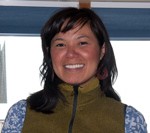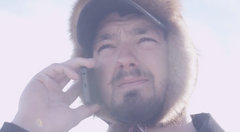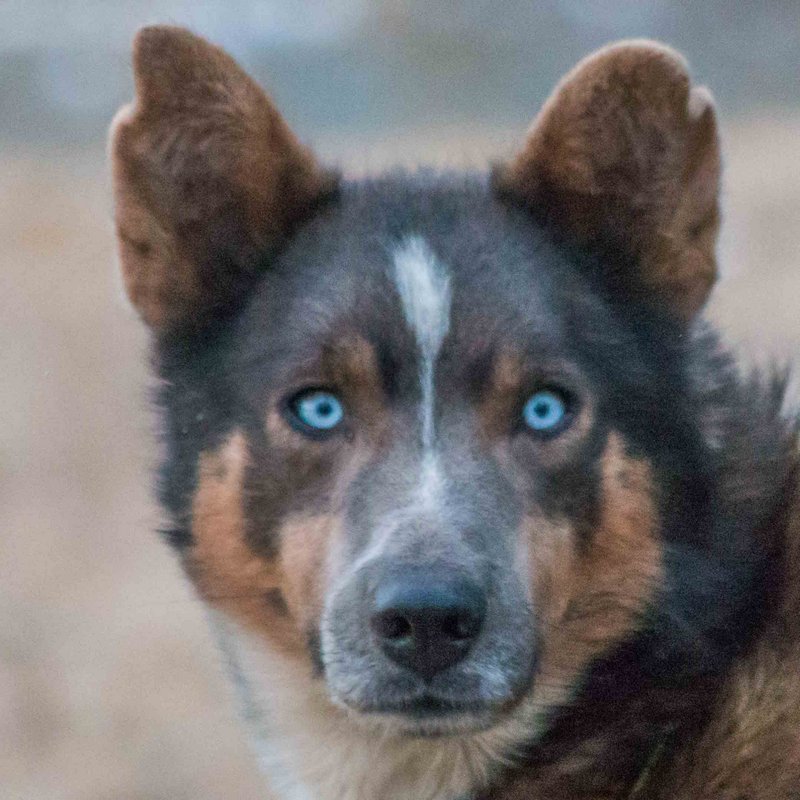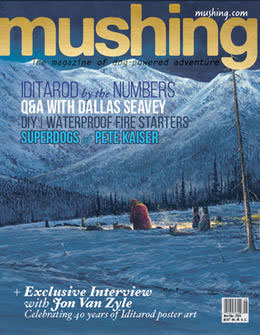We welcome Andy Angstman to the Kaiser Racing Family as our personal Eye on the Trail, so to speak. Andy has been around dogs and mushing since he could walk and has personal Iditarod Experience. Both he and his dad, Myron, have both run the Iditarod and many other races. His insight will be a valuable window into the Iditarod and what is happening day by day. Thanks Andy and Welcome!!
Here are a few thoughts from Andy about the 24-hour layover:
The most typical race strategy in the Iditarod, historically, is to run six hours and rest six hours. Obviously, many frontrunners today run longer than they rest, but still, it is ideal to get two runs and two rests in daily. This is best for the health of the dogs and also for the health and sanity of the musher. The 24-hour layover, then, encompasses two run-rest cycles. The mushers plan their time during this break to maximize the opportunity to get calories into their dogs and to rest their dogs and themselves. This will be the first decent sleep Pete has gotten since last weekend, and the last he will get until next week at the Madden’s house on Front Street. On a regular six-hour break, a musher might get one-and-a-half-hours of shuteye (many of the top mushers taking a 4 or 5 hour break will get less than an hour). On a 24, they should get a couple of 6+ hour snoozes.
On the Iditarod, most mushers try to avoid running the dogs during afternoon, as the March sun can put a lot of stress on a team. Furthermore, think about how you feel at 3 AM or 3 PM in the average 24-hour period. Dogs follow similar circadian rythms to people, in that they want to sleep away the heat of the afternoon and the dark of the night. If we take the earlier idea of the run six/rest six into consideration, it is best to run a team from 6 PM until midnight, and again from 6 AM until noon, while resting from midnight until 6 AM and noon until 6 PM. Those are, obviously, almost impossible to follow strictly, but you would be surprised how many dog mushers will shut their teams down at approximately those times of day and night. Getting back to the 24 hour layover… Pete stopped at 3:21 AM last night, and with the adjusted time will leave at 4:37 AM tomorrow morning. This is a good time to leave, because it allows him to do long run before the afternoon heat becomes a factor tomorrow. A team pulling in at noon, and leaving at about noon the next day, has little choice but to swelter. Also, a team pulling in at midnight will be leaving at about the following midnight and running through the darkest, sleepiest time of night, which is not ideal either.
Many mushers choose to take their break in Takotna these days, both for the competitive advantage (how the runs and rests set up coming and going from that checkpoint) and also because the hospitality is superb. As a rookie in 2007, I wasn’t too worried about the competitive aspect, and in fact McGrath worked out well for me as a stopping point, coming off a tough first 300 miles. As far as the hospitality was concerned, I asked five-time champ Rick Swenson before the race, “don’t they cook made-to-order steaks for every musher at Takotna?” The classic Swenson reply: “those ladies in McGrath will cook anything you want any damn way you want it.” So I stopped in McGrath. It was a great place to take a long break. For one thing, at that time my friend Joe Dale owned Joe’s Bar, right next to McGwire’s Tavern. I may or may not have had a pint of beer in there during my layover (which is generally frowned upon by the Iditarod folks).
As for what it’s like in and around the checkpoint, try to imagine a calming, almost eerie silence outside among the dog teams, especially at night. Tonight after sunset there will be, literally, hundreds of dogs sleeping in Takotna, and it will be almost totally quiet save for the occasional snowmachine rolling past. At the same time, step inside the McGrath or Takotna community center and it is lively as can be. Mushers, checkers, veterinarians, race judges, volunteers, kids, hangers-on, all sitting around chowing down on food and conversing. The discussion can get quite lively, especially among the mushers who have had a few hours of rest and are already telling stories from the first 300+ miles of trail. The trick is to get your fill of food, hydrate yourself, exchange a few pleasantries, and head back out to your dog team (and eventually back to the sleeping cabin). Pete is a disciplined musher and his checkpoint routine is solid, a lot like John Baker, Jeff King, and other perennial frontrunners.




















